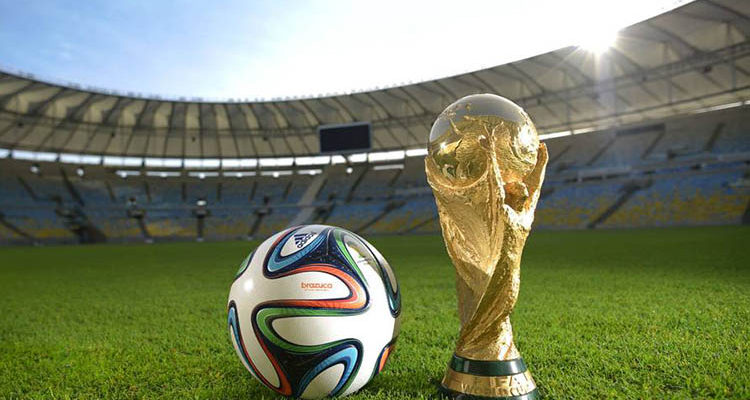The following are the further musings of Rider University and former U.S. U-15 National Coach Charlie Inverso on the recently-completed World Cup and what U.S. Soccer needs to do to become competitive with the world’s top teams.
By Charlie Inverso
Correspondent
July 18: What a month!
A fabulous month of soccer is over. The best World Cup ever, in my opinion, gave us so many great teams, players and moments of drama and was nothing but a positive for the game.
Croatia was an amazing story. We all know they were the second smallest nation to make the World Cup final and most are aware of the hardships and suffering the country has endured. The untold story is the amazing developmental system that the Croatians has implemented to get to this stage in world soccer.
Croatia does not have a strong domestic league with wealthy clubs like Spain, Germany, Italy and England. Their domestic league is rated somewhere between 15-18 in Europe with an average league attendance between 3,000-4,000 per game. It’s most dominant team, Dynamo Zagreb, has won 12 of the last 13 league titles.
Due to a lack of wealthy clubs Croatia had to be innovative to create this amazing player developmental system. It is a cooperative between the national football foundation, clubs and government subsidies. The clubs all apply the same developmental plan. It is not like the wild west here in the U.S. where you can do whatever you wish.
In Croatia, what an 11-year-old player does is almost polar opposite to what we do here for the same age. Their system emphasizes situational conditions and technical repetition instead of formations, systems of play and winning tournaments. In layman’s terms, what they have done is produce exciting, technical players who go after the game the way it was meant to be played, with a skillful, attacking mentality. For a small nation to produce six players on the world’s best clubs (including the Golden Ball winner) is just amazing.
I love Croatia’s team but I also loved the French. They always seem to combine exciting athletic ability with great technical players.
Didier Deschamps is a great coach. His players bought into his game plan and he got the most out of some challenging guys; especially Paul Pogba. He epitomized what a soccer coach should be by keeping a low profile, letting his stars shine and not trying to draw the attention towards himself or taking credit for his tactical moves.
France also has one of the best youth developmental systems in the world. Acclaimed stat master Norm Paul calculated that the French have more players (75) on the rosters of Top 25 world ranked clubs than anyone else. This didn’t happen by accident. France has long implemented a regional development system where 12 technical centers develop the best players ages 11-15. At age 15 the professional teams take over player development. They have also found a way to involve kids from the less affluent areas of France.
Click here for more on this subject
The regional system that France employs is the system we should implement here. (Google Clairefontaine to learn more). Not many of our professional clubs can afford to have the development systems that are in place in Europe. However, this form of cooperative venture between our national federation and pro clubs would make a remarkable change in the type of players that we produce.
Players are the product and our factory needs revamping. There’s no better time to revamp the system then after a failure. We have to decide if we want soccer to be a leisure/recreation activity in this country or if we want to be really good at it.
‘Heading’ for problems
Set pieces accounted for 43 percent of all goals in the World Cup. Most of them came from well timed, thundering head balls. Did you see how good England was on headers?
There are no world rankings for heading ability but if there were I suspect the U.S. would be in the lower end of the rankings. We have ruled out heading for under ages of 10 and limited the amount of heading between ages 11-13. I am certainly not advocating that we neglect head trauma but there must be a way for us to introduce the skill in a safe way so that we do not fall even further behind in this vitally important skill.
Why don’t big clubs invest?
If you read the Les Blues link, it still baffles me that more of the world’s wealthiest clubs don’t invest in the American urban areas. Clubs are scoping the world for very young talent ages 11-15, (read the book Away Game: The Epic Search for Soccer’s Next Superstars by Sebastian Abbot)
The American urban areas are the perfect place to create a soccer environment and develop players. America’s urban and underserved communities would provide clubs with:
*Tough, athletic kids who not only need to be part of something positive but also have the time to invest in becoming talented players.
*Immigrant kids who already have soccer in their blood.
*Densely populated neighborhoods that are ideal for pick-up soccer.
Size of country – does it matter?
Uruguay, Croatia and Belgium have a combined population of 18 million. Four other quarterfinalists (Russia, England, France and Brazil) have a total of 475 million citizens. Does the size of a country help or hurt a country? I believe Uruguay, Croatia and Belgium benefitted from the fact that they used the size of their country to become more united in their approach to develop players.
I think a less obvious statistic that impacts player development is the population density within cities/towns of a country. Even though pick-up street soccer is now slightly less popular in Europe it is still a huge factor in player development; because soccer is played by city dwellers and there a lot of densely populated cities in Europe. City density is another reason why I think urban and underserved towns could be a big factor in future success of soccer in America.
Pick-up/Street soccer games in America
The actual sizes of neighborhoods in America are big and getting bigger. But there are less kids in American neighborhoods than ever before. This makes pick-up/street soccer almost impossible in suburban America. Could you imagine trying to get a pick-up game in West Windsor, Allentown or Hopewell? So what is the solution? Adults have to create pick-up soccer venues where kids can play free flowing, uninterrupted games. I hope to talk more on this in the next article.
Tom Byer
This might be something that those with young children or grandchildren might find interesting. In the last article we talked about the amazing success of Japan. New York City-born Tom Byer has been teaching soccer in Japan for the past 30 years and is given much credit for the success of both their men’s and women’s national team.
Byer believes that soccer skill is created at an early age by parents, not coaches. He developed a television show called Tomsan Soccer which became the number one children’s show in Japan and was also made into a comic book. It taught kids how to develop skill.
Byer’s work with kids starts at an age when they are just able to run. His beliefs are based on developing fluid motions and coordination for the area from the hips down to the feet. It is very similar to the Coever Method that became popular in the 80’s. Soccer is definitely a sport where the body cannot be stiff and I think Byer’s methods have validity. I would suggest that you look more into him.
Random thoughts
Some disagree but I think was the best telecast of any World Cup. If you think differently, try to remember back to the first World Cup the US qualified for in 1990. The games were on TBS and the studio was anchored by the lovable Ernie Johnson who would try to explain to the viewing audience how a corner kick is awarded.
My favorite broadcast talent is:
Play by Play: John Strong, JP Delle Camera, and despite being Joe Fink’s college roommate, Glenn Davis. Glenn should have gotten more games.
Color: Tony Meola and Stu Holden are outstanding. They nail all of the important points in a timely fashion. What I like about both guys are they rarely talk about their playing careers; they don’t’ try to be funny or use ‘hip’ terminology; and they don’t try to pronounce a player’s name in his native tongue.
Studio: The excitement of so many games did come to a screeching halt when they went back to the studio but I did enjoy “Grumpy” Gus Hinndick, Ian Wright, and Kate Abdo. I have grown to appreciate Rob Stone and how can you not pay attention to what Clarence Seedorf says.
Joe Machnik, who was the first goalkeeper “guru’ in the US, did an outstanding job. The VAR
(Video Assistant Referee) was incredible and made a big difference in the tournament.
VAR-great but cost Croatia
I thought the VAR was fantastic and got so many decisive calls correct. It did, however, hurt Croatia significantly. Without having to go to VAR, I highly doubt the penalty kick would have been awarded. Most referees don’t call that penalty in a big game and coupled with the fact that Greizmann sold his foul on France’s first goal, the game might have had a different flow.
Billy Gazonas
Billy Gazonas was one of the greatest players ever produced in the Mercer County area. Billy and “Mooch Myernick” were back-to-back Hermann Trophy winners in the mid 1970s as college soccer’s top players.
Despite being only 5-4, Billy captained tiny Hartwick college to a national championship in 1977. If you missed seeing Billy play but saw Croatia’s Luka Modric you were basically watching the same player. The darting cuts, ball mastery and heart of a lion taking no crap from stronger players served as a remarkable flashback to watching “The Greek” play for St. Anthony, Trenton Extension and Hartwick.
Fans
One of my most negative friends asked me why I wrote these articles. Am I trying to be a soccer missionary? I laughingly said, yes, I want more people to realize what a great game this is when it is played correctly. And I want the game to grow.
That got me to thinking. I hate to generalize but I have put everyone in the US in one of five categories when it comes to soccer interest. They are:
*Purists: These people live the game every day. They either watch, play, coach or talk about soccer on a regular basis. For the game to grow we need them selling it to the next four levels of soccer fans.
*Casual fans: These folks will watch a really good game. They love the World Cup. They will watch the Champions League, English Premier League, Spanish League occasionally. We need the casual fans to get closer to being purists.
The World Cup was a great stage to pull more casual fans in because of the number of great players on display in Russia. I have had people say to me, “I only knew three players (Messi, Ronaldo, Neymar) before the tournament. Now I know 20.”
Hopefully, the casuals will watch their favorite players in Europe this fall. It would be really cool if half the casual fans morphed into purists by 2026 when we host the World Cup. I will know we made progress if in eight years I am watching a game at the Hibernians and Rich Fisher leans over to say “You know, I think Man. United is playing out of a 4-4-2 today.”
*Soccer parents: This might be the most important and influential category of soccer fans in the country. It’s a huge and very passionate demographic and the group that I had most in mind when writing these blogs. Many soccer parents are also rabid fans of the game, which is great.
But there are many soccer parents who only watch when their kids are playing. For me, it is incumbent for our national, regional and state associations to bring soccer parents in and expose them to not only to the game at a higher level but how players develop to get to that higher level. I want to write more about this in my final article.
We need to find a way for more soccer parents to get the bigger picture with regards to the importance of skill development and how to go about it. We need for parents to not only understand how a player develops but that the role the parent-coach plays is absolutely essential in making better players. If we can galvanize the power of the soccer parents, the sport will become so much better on so many levels.
*Apathetic: They don’t hate soccer but either don’t understand it or have limited interest.
*Haters: I have no stats but there are way less people in this category than there used to be. Because they are passionate we can still save these people!
Ok purists, the ball is in your court!










